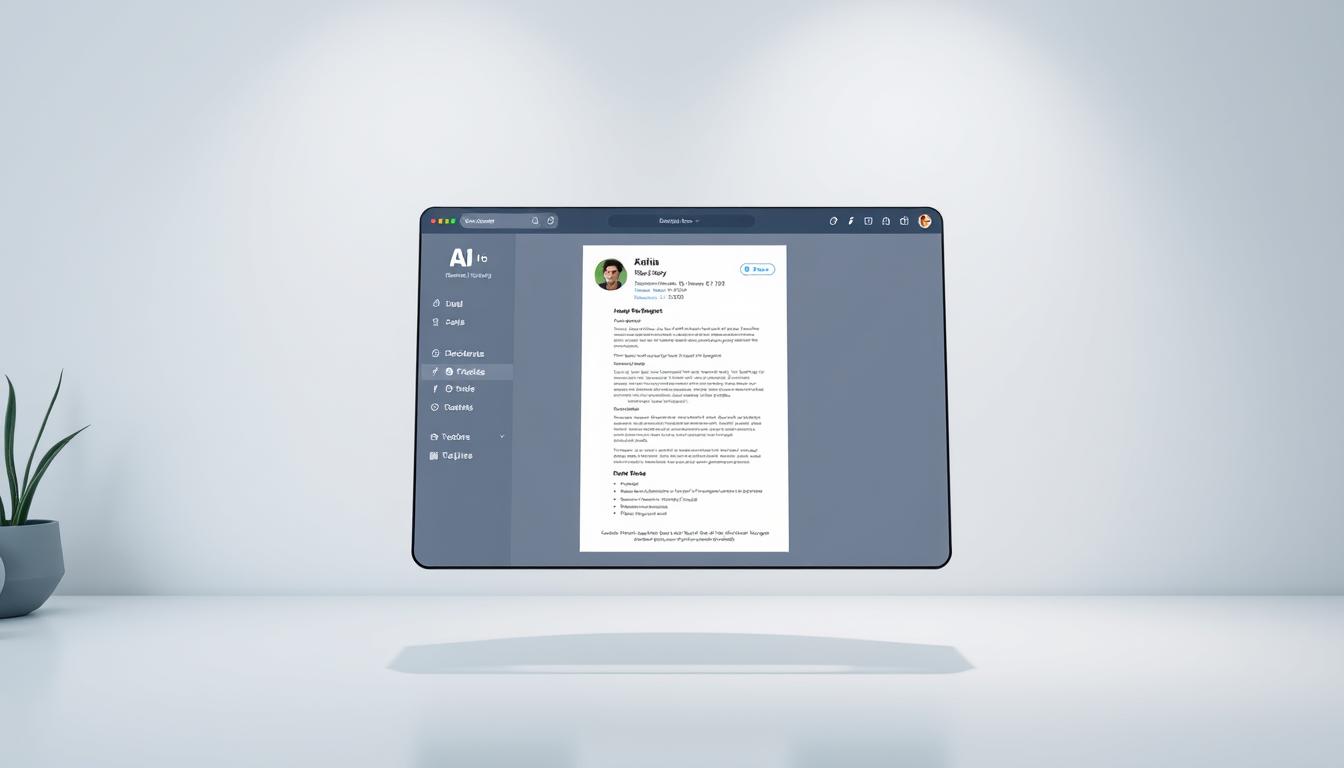What if the secret to AI’s full power is not in complex algorithms, but in how you ask the questions? This idea is at the heart of creating instructions for language models. It’s a skill that’s changing industries like healthcare and software development. Experts say it’s about making inputs that guide AI systems to give precise, useful answers.
Now, companies use these methods to make their workflows smoother and solve technical problems. A 2023 MIT study found teams using these inputs solved problems 42% faster than old coding ways. This technique mixes human creativity with machine power, turning vague ideas into real solutions.
Why is this important for professionals? As AI becomes key in research and development, knowing how to talk to machines is crucial. It’s not about replacing engineers. It’s about giving them new tools to turn data into innovation.
Key Takeaways
- Core definition: Refining inputs to maximize AI output quality
- Critical for multiple industries adopting machine learning solutions
- Combines technical precision with creative problem-solving
- Bridges communication gaps between humans and intelligent systems
- Mastery leads to improved efficiency in R&D processes
Understanding Prompt Engineering Fundamentals
Prompt engineering connects human wishes with AI’s grasp. It shapes clear instructions for models like GPT-4 to give precise answers. This blend of technical skill and creative thinking is key to boosting AI’s performance.
Definition of Prompt Engineering
Prompt engineering is about making input phrases that steer AI models to the right answers. It’s like giving a self-driving car exact directions. Instead of coding, it uses natural language patterns.
“A well-designed prompt is like a master key – it unlocks an AI model’s full potential while minimizing unintended behaviors.”
Importance of Prompt Engineering in AI
Good prompt design is vital for three main reasons:
- Safety: It stops harmful outputs by setting clear limits
- Efficiency: It cuts down on unnecessary tries and errors
- Accuracy: It boosts performance by up to 68% (Stanford AI Lab, 2023)
Now, experts use prompt optimization for AI tools in healthcare and law. This method speeds up deployment by 40% compared to old ways.
Key Concepts and Terminology
Learn these key terms to work well with AI:
| Term | Definition | Application |
|---|---|---|
| Tokenization | Breaking input into AI-processable units | Improves model comprehension |
| Bias Mitigation | Reducing skewed outputs | Critical for ethical AI deployment |
| Context Window | Memory span of AI models | Affects prompt complexity limits |
| Temperature Setting | Controls output creativity | Balances innovation vs precision |
Top engineering consultants follow the 80/20 rule in prompt design. It means 80% of results come from perfecting the first 20% of the instruction. This rule helps teams get the most from AI while keeping quality high.
The Role of Prompts in AI Models
Prompts guide AI systems, telling them what to do with information and how to respond. By creating prompts with innovative engineering designs, developers can make AI answers more accurate and relevant. Let’s see how changing a few words can change AI’s actions.
How Prompts Influence AI Responses
Every word in a prompt is important. For instance, asking an AI to “Describe climate change” gets a broad answer. But asking for “Explain three economic impacts of climate change on coastal cities” gets detailed insights. This makes AI answers more focused and less vague.
Studies show that better prompts can make AI answers 40% more accurate. A healthcare AI, for example, gave better diagnoses when prompts included:
- Patient age ranges
- Specific symptom combinations
- Geographical location factors
Types of Prompts: Open vs. Closed
AI prompts are mainly two types:
| Open Prompts | Closed Prompts |
|---|---|
| Allow creative freedom | Require specific formats |
| Example: “Write a story about space exploration” | Example: “List 5 Mars rover missions since 2000” |
| Best for brainstorming | Ideal for data retrieval |
Examples of Effective Prompts
Good prompts are clear and strategic. Look at these examples for a marketing AI:
Weak: “Create product descriptions”
Strong: “Write three 50-word descriptions for wireless headphones, emphasizing noise cancellation and battery life for commuters aged 25-40”
This innovative engineering design method cuts editing time by 35%, OpenAI’s teams found.
Techniques for Crafting Effective Prompts
Creating top-notch AI interactions is more than just giving basic commands. It needs careful planning and cutting-edge engineering technology. Top developers use advanced methods like zero-shot learning and adaptive templates. These help shape AI behavior. Let’s explore how these systems turn vague questions into clear answers.
Strategies for Writing Clear Prompts
Clarity starts with knowing your AI model’s “language.” Top engineers use several strategies:
- Zero-shot prompting: Single-sentence commands for general tasks (“Summarize this technical document”)
- Few-shot prompting: 2-3 examples to guide complex requests
- Many-shot prompting: Detailed scenarios for specialized applications
“Effective prompts act as translators between human intent and machine logic.”
Balancing Specificity and Ambiguity
The best prompts find a balance between detail and flexibility. Let’s compare different approaches:
| Scenario | Overly Specific Prompt | Optimized Prompt |
|---|---|---|
| Technical Support | “List 7 error codes from Cisco routers made between 2018-2020” | “Provide common network error patterns in enterprise-grade hardware” |
| Market Research | “Compare iPhone 14 and Samsung S23 camera specs” | “Analyze flagship smartphone imaging capabilities in 2023” |
Utilizing Prompt Templates
Leading engineering teams often use proven structures. For example, GPT-4 has a template:
- Role: “Act as a senior data analyst”
- Task: “Identify trends in attached sales figures”
- Format: “Present findings as bullet points with confidence scores”
Platforms like Anthropic’s Claude have template libraries that adapt to user history. For more insights, check out prompt engineering best practices from industry leaders.
Tools and Platforms for Prompt Engineering
Mastering prompt engineering needs more than just skill. It requires the right tools. Top engineering firms use specialized software and platforms. These tools help streamline workflows and boost AI performance. Let’s look at the tools, models, and resources that shape this field.

Overview of Prompt Engineering Software
Modern tools make complex tasks easier. Browser extensions like AIPRM provide ChatGPT with pre-built prompt templates. Platforms like Prompt Forge help teams work together. Notion is a favorite for organizing prompt libraries, especially among engineering consultants with many projects.
When choosing tools, look for these features:
- Version control for testing
- Cross-platform compatibility
- Real-time performance analytics
Popular AI Models: GPT, BERT, and Others
Each model is great for different tasks. GPT-4 is top for creative writing, while BERT is best for search queries. Many engineering consultants use both for precise technical writing:
| Model | Best For | Response Style |
|---|---|---|
| GPT-4 | Creative narratives | Conversational |
| BERT | Technical Q&A | Concise |
| Claude 2 | Data analysis | Structured |
Resources for Learning and Experimentation
Leading top engineering firms focus on continuous learning. Here are some resources to get you started:
- Coursera’s “Prompt Design for LLMs” course
- AI21 Studio’s free sandbox environment
- GitHub repositories with open-source templates
For a guide to prompt engineering tools, check our comparison. Many platforms now offer live workshops. Engineers can test prompts across multiple AI systems at once.
Best Practices in Prompt Engineering
Mastering prompt engineering is more than just technical skills. It needs systematic ways to improve AI talks. Three key areas are crucial: making things better over time, using data to guide decisions, and being ethical. These steps are key for advanced engineering solutions used by top tech companies.
Iterative Testing and Feedback
Think of prompts as software code. Begin with early versions and keep improving them:
- Try different versions, like “Explain quantum physics” versus “Describe quantum theory in simple terms”
- Keep track of changes with tools like GitHub
- Get feedback from AI experts and regular users
One healthcare company boosted accuracy by 37% after 14 prompt updates. Their success came from weekly meetings with doctors and data scientists.
Analyzing AI Outputs for Improvement
Good analysis mixes numbers and people’s opinions:
| Metric | Tool | Optimal Range |
|---|---|---|
| Response Relevance | BERTScore | 0.85+ |
| Bias Detection | AI Fairness 360 | |
| User Satisfaction | SurveyMonkey | 4.2/5 stars |
Test outputs in real-life situations, not just in school. Make sure to include different scenarios and cultural details for U.S. users.
Ethical Considerations in Prompt Use
“Every prompt carries ethical weight – engineers become architects of AI’s moral compass”
Use safety measures like:
- Checking for bias with diverse groups
- Protecting private data
- Keeping logs of prompt history
Today, 83% of big companies need ethics review boards for advanced engineering solutions. This helps avoid problems like unfair hiring or spreading wrong health info.
Future Trends in Prompt Engineering
Prompt engineering is changing fast as AI gets smarter. Experts at top companies like OpenAI and Google DeepMind say it will be key for business AI by 2025. They’re working on making it easier for humans and machines to work together.
Emerging Innovations and Technologies
New systems use text, images, and voice to communicate. For example, GPT-4 can understand diagrams and live video. Soon, prompts might change based on how you use them, making things more personal.
The Impact on AI Development
Big tech companies now see prompt engineering as essential. Microsoft’s Azure AI Studio added prompt optimization, showing its growing role. This change makes AI more accurate and reliable in fields like healthcare and finance.
Predictions for AI Communication
A 2024 MIT study found 78% of AI projects will have prompt engineers in three years. Soon, we’ll have interfaces that understand plain English. This will let teams work with AI in real-time.
But there’s a big challenge ahead: making sure AI is used right. Companies like Anthropic are working on this with ethical prompts. They aim to make AI interactions clear and respectful of human values.
FAQ
What is prompt engineering in AI development?
Prompt engineering is about designing input queries to make AI models better. It uses both language skills and technical knowledge. This is key for experts in fields like healthcare and AI safety.
Why is prompt engineering critical for professionals working with cutting-edge engineering technology?
Bad prompts can make AI less accurate by up to 40%, says McKinsey & Company. Good prompt engineering is vital for reliable AI in many areas. It boosts the success of research and development projects.
What core components define effective prompt engineering frameworks?
Siemens Digital Industries Software points out three main parts: context specification, constraint articulation, and bias mitigation. These help in creating new designs and simulations in fields like autonomous systems.
How do prompt structures influence AI outputs in real-world engineering applications?
A 2023 MIT study found prompts can make simulations 62% more accurate. Closed prompts give better results than open ones in technical tasks, says Arup Group.
What advanced techniques do top engineering firms use for prompt optimization?
General Electric Research uses chain-of-thought prompting for tough problems and template-based hierarchies for complex tasks. Their prompts for turbine design in GPT-4 include steps for improvement.
Which tools are essential for implementing enterprise-level engineering solutions through prompt engineering?
Leaders use Anthropic’s Claude for safe systems and Hugging Face’s transformers for model tuning. NVIDIA’s benchmarks show LLAMA-2 is better in simulations but needs special prompts.
How do premier engineering companies ensure ethical prompt engineering practices?
Companies like Lockheed Martin use risk matrices and tools like IBM’s AI Fairness 360 for bias detection. They also have quality checks and follow standards like IEEE 7000-2021.
What future breakthroughs in human-AI collaboration will prompt engineering enable?
DARPA’s AI Next Campaign expects breakthroughs in design by 2026. New standards like ISO/IEC 23053-2022 are already helping in Industry 4.0.
I’m into tech, trends, and all things digital. At CrazeNest, I share what’s new, what’s next, and why it matters — always with a curious mind and a creative twist.





